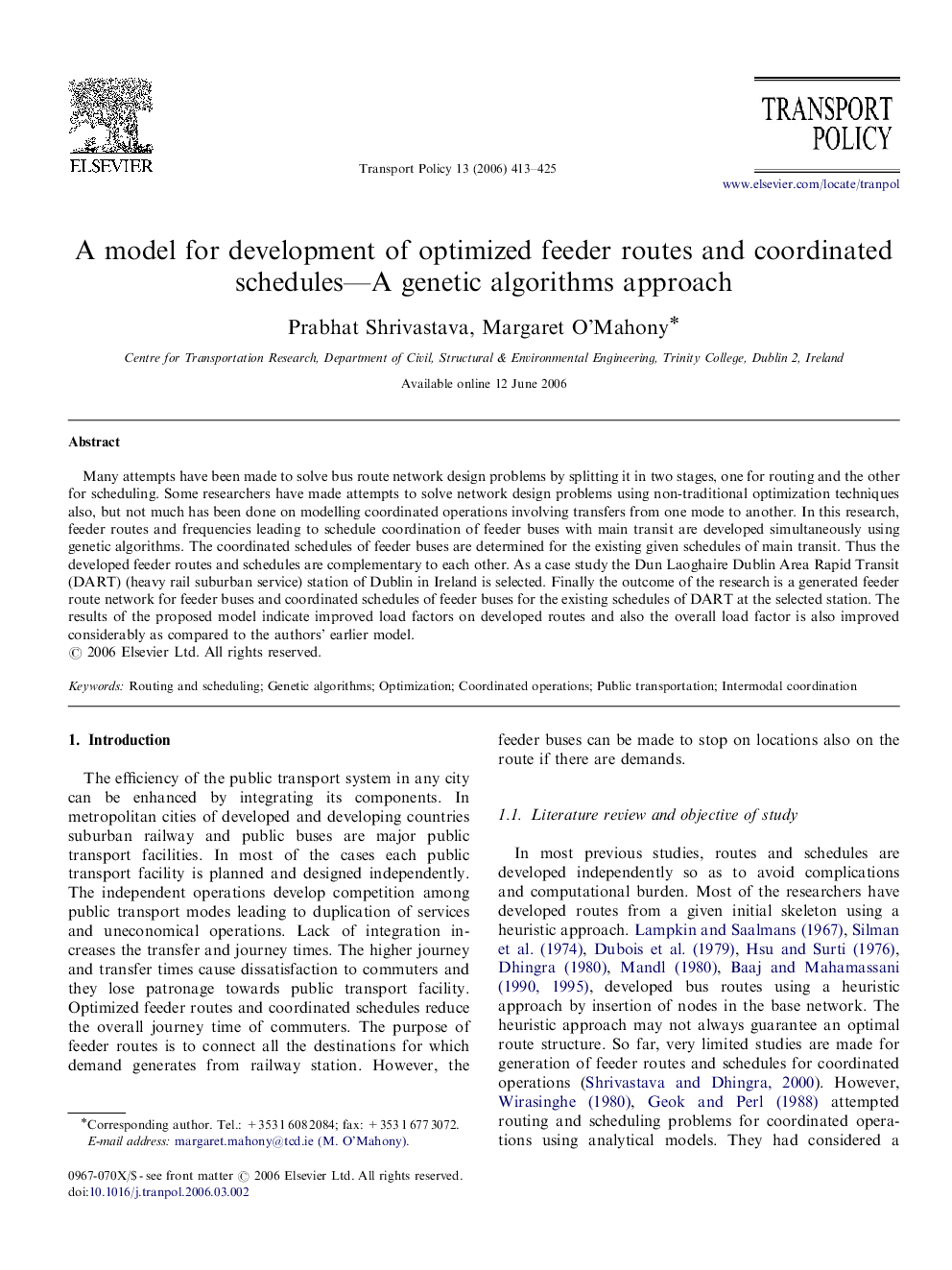| Article ID | Journal | Published Year | Pages | File Type |
|---|---|---|---|---|
| 1065448 | Transport Policy | 2006 | 13 Pages |
Many attempts have been made to solve bus route network design problems by splitting it in two stages, one for routing and the other for scheduling. Some researchers have made attempts to solve network design problems using non-traditional optimization techniques also, but not much has been done on modelling coordinated operations involving transfers from one mode to another. In this research, feeder routes and frequencies leading to schedule coordination of feeder buses with main transit are developed simultaneously using genetic algorithms. The coordinated schedules of feeder buses are determined for the existing given schedules of main transit. Thus the developed feeder routes and schedules are complementary to each other. As a case study the Dun Laoghaire Dublin Area Rapid Transit (DART) (heavy rail suburban service) station of Dublin in Ireland is selected. Finally the outcome of the research is a generated feeder route network for feeder buses and coordinated schedules of feeder buses for the existing schedules of DART at the selected station. The results of the proposed model indicate improved load factors on developed routes and also the overall load factor is also improved considerably as compared to the authors’ earlier model.
